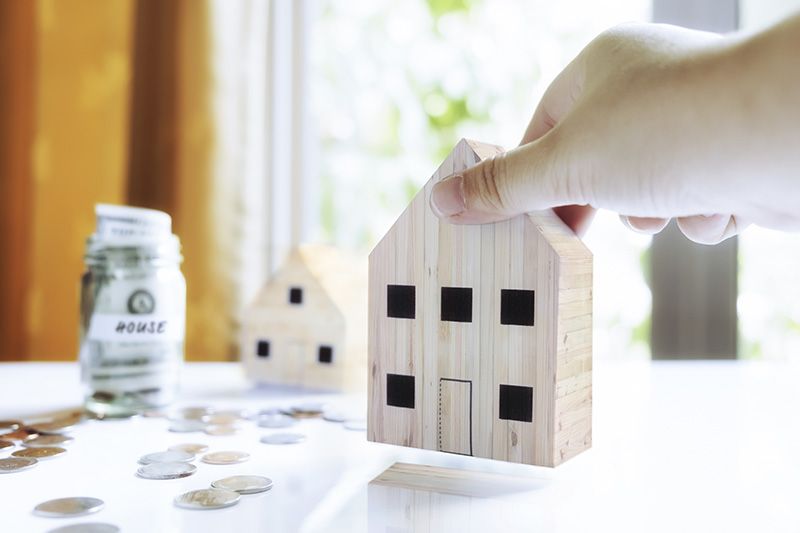What is Fannie Mae HomeReady?

Fannie Mae is officially known as the Federal National Mortgage Association (FNMA). Fannie Mae is a government-sponsored enterprise but is private. Congress chartered the organization during the Great Depression as part of the New Deal. The goal of creating the organization was to stimulate homeownership and provide more liquidity into the mortgage market. The purpose of Fannie Mae remains to help low and moderate-income borrowers get financing for homeownership.
Fannie Mae doesn’t originate or give out mortgages. Instead, the organization buys and guarantees mortgages through a secondary mortgage market. Since Fannie Mae invests in mortgages, it gives lenders more liquidity. With more liquidity, lenders can fund more mortgages. The other buyer of mortgages in the secondary market is Freddie Mac, also chartered by Congress.
What is HomeReady?
A HomeReady mortgage is geared toward low and moderate-income borrowers who have good credit. Fannie Mae sponsors the mortgages under this program. The program is similar to Home Possible from Freddie Mac.
With a HomeReady mortgage, qualifying borrowers can make a 3% down payment instead of 20%. The pricing on a HomeReady mortgage is comparable to or better than standard mortgage pricing.
The financing costs and mortgage insurance costs are low.
How Does the Program Work?
The HomeReady program is available to both first-time and also repeat buyers. You can also use the program if you want to refinance an existing mortgage. You need to have a credit score of at least 620. If you have a score of 680 or higher, you can get better terms.
You may be eligible if your income is 80% or less of the area median income for the census tract where a property is located. This includes properties that are located in low-income census tracts.
You can have ownership interests in other residential properties and still be eligible as a borrower under HomeReady, but only one property can be financed when you close.
Program Benefits
Along with a down payment of just 3%, as we touched on, when you qualify for a HomeReady mortgage, you can get pricing that’s at least equal to if not better than the standard. You can also take advantage of mortgage insurance coverage requirements that are below the average when your loan-to-value ratio is anywhere between 90-97%.
You don’t have to use a minimum amount of personal funds for your down payment and closing costs. You can instead use sources like grants, gifs, or Community Seconds mortgages.
The terms of the HomeReady mortgage are highly flexible. Family members and parents can be listed as co-borrowers even if they aren’t going to live in the home. If you were going to buy a house with a rental unit attached, you could use future rental income as part of your eligibility to qualify for the loan.
Are There Downsides of HomeReady Mortgages?
There are a few potential downsides to think about with HomeReady.
First, there are limits on how much you can borrow. Fannie Mae uses a conforming loan limit, and in some parts of the United States, housing prices on average might be much higher than this. This can include even affordable properties relative to the area they’re in.
In some areas, if 115% of the median home value is beyond the conforming loan limit, then there’s a higher baseline limit. However, even though you can borrow a higher amount doesn’t mean that it isn’t risky to do so.
Special populations, including public servants, might have access to more flexibility if they use the program, and the loans don’t require manual underwriting.
Similarly, there are flexibilities for people with disabilities.
All borrowers have to go through homeownership counseling through Framework, an online course approved by HUD.
The HomeReady program has advantages for some buyers if you meet the qualifications. Of course, if you can put more money down on a home, it can be better financially to do so because you start out right away with more equity. Not everyone has that option though, so HomeReady makes owning a home a reality when it might not otherwise be.
Are There HomeReady Alternatives?
One alternative to HomeReady is Home Possible from Freddie Mac, but there are also FHA loans. FHA loans have less stringent financial requirements for homebuyers, as is the case with HomeReady. The required down payment is just 3.5% if you qualify. You only need a FICO score of 580 or higher for an FHA loan, but your debt-to-income ratio has to be 45% or less.
The federal government backs the FHA loan. HomeReady is backed by a private lender—Fannie Mae. FHA loans have a higher down payment requirement and limitations on using gifted money. HomeReady loans allow for alternate credit reporting but FHA loans don’t.
Both types of mortgage can be applied for through local and national lenders, as well as online lenders.